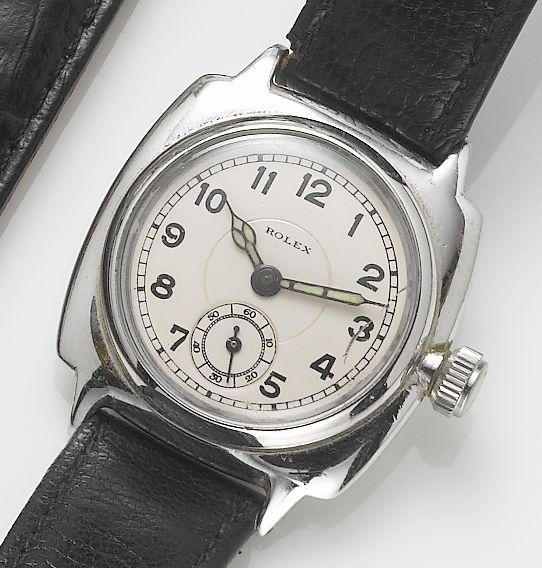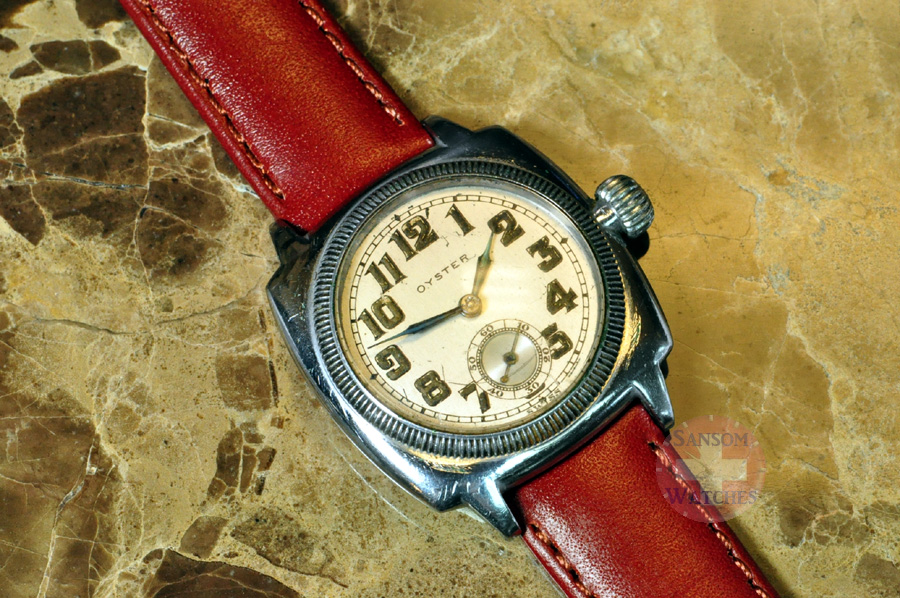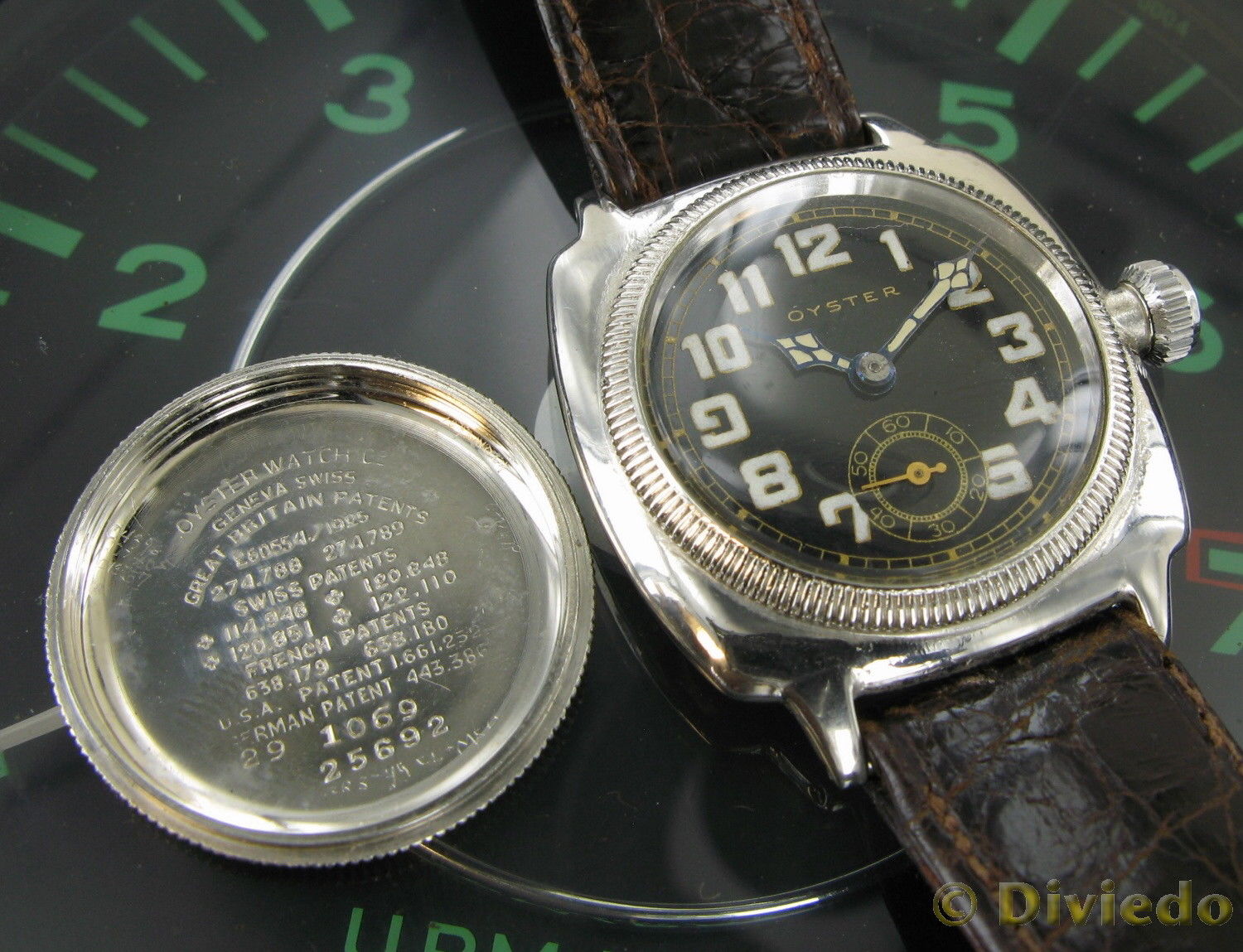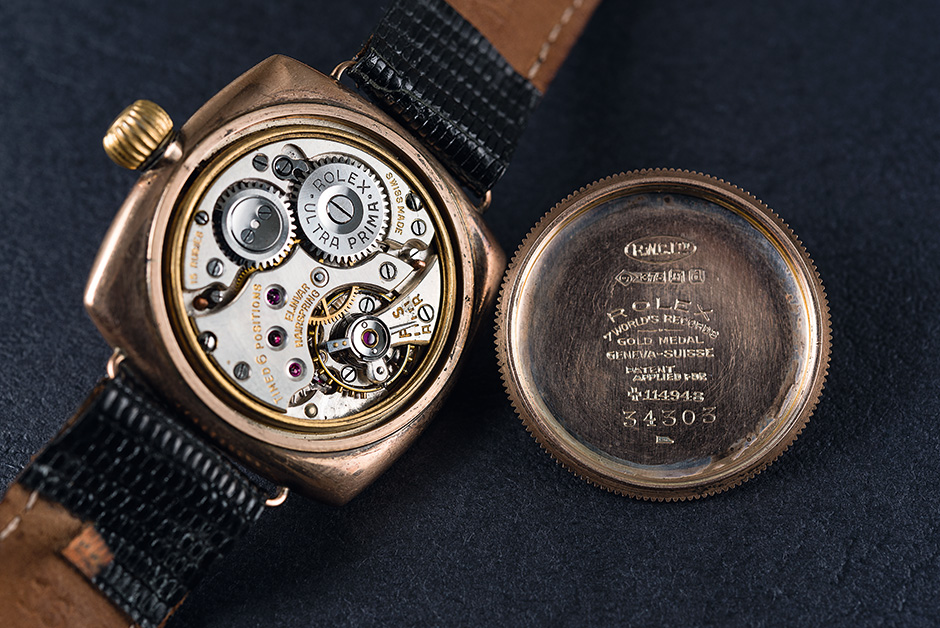Notes: Rolex's first mass produced watch. Famously, the English swimmer Mercedes Gleitze was given one to wear as she swum across the Channel that October 1927.
The design of the original Oyster case itself is quite interesting, as the movement is not attached directly to the case body. Rather, the case is composed of three parts: a central case with the lugs attached to it, and separate bezel and case-back, both screw-on. The movement, dial and hands are held in a metal ring with external screwed threads, with a hole at the 3 o’clock position and a pin at the 9 o’clock position. The ring is inserted into the case body, and the pin at 9 fits into a matching hole in the case; the crown and winding stem are then fitted into the hole at 3 and the bezel and case back are screwed into place.
As with all Rolex watches of the period, the movements were made by Aegler in Bienne, and this particular movement was known as the 10½ Hunter: 10½ being the size in lignes (23.7mm) and “Hunter” being the layout of the watch design, meaning that the winding crown was at 3, as in a hunter pocket watch (one with a lid that closed over the dial), rather than at 12 as in an open-face pocket watch.
The design of the original Oyster case itself is quite interesting, as the movement is not attached directly to the case body. Rather, the case is composed of three parts: a central case with the lugs attached to it, and separate bezel and case-back, both screw-on. The movement, dial and hands are held in a metal ring with external screwed threads, with a hole at the 3 o’clock position and a pin at the 9 o’clock position. The ring is inserted into the case body, and the pin at 9 fits into a matching hole in the case; the crown and winding stem are then fitted into the hole at 3 and the bezel and case back are screwed into place.
As with all Rolex watches of the period, the movements were made by Aegler in Bienne, and this particular movement was known as the 10½ Hunter: 10½ being the size in lignes (23.7mm) and “Hunter” being the layout of the watch design, meaning that the winding crown was at 3, as in a hunter pocket watch (one with a lid that closed over the dial), rather than at 12 as in an open-face pocket watch.
Mechanism: The Hunter series of movements was introduced in 1923 and designed to replace the earlier Rebberg series. The new movements came in three versions: Prima, Extra Prima and Ultra Prima. The 10½ Hunter was named as 10½ is the size in lignes (23.7mm) and “Hunter” being the layout of the watch design, meaning that the winding crown was at 3, as in a hunter pocket watch (one with a lid that closed over the dial), rather than at 12 as in an open-face pocket watch. They are all 15 jewel constructions, and differentiated only by the timing tests carried out after construction: the best 10 per cent were given the coveted Ultra Prima designation, while the balance were split between Prima, which were the less accurate and Extra Prima, which fell in between. The Ultra Prima watches were also usually marked as such on the dial.
This early version of the Hunter was phased out with the introduction of the Superbalance series in 1935.
This early version of the Hunter was phased out with the introduction of the Superbalance series in 1935.
Item created by: gdm on 2018-09-30 19:12:16. Last edited by gdm on 2018-09-30 19:48:02
If you see errors or missing data in this entry, please feel free to log in and edit it. Anyone with a Gmail account can log in instantly.
If you see errors or missing data in this entry, please feel free to log in and edit it. Anyone with a Gmail account can log in instantly.





